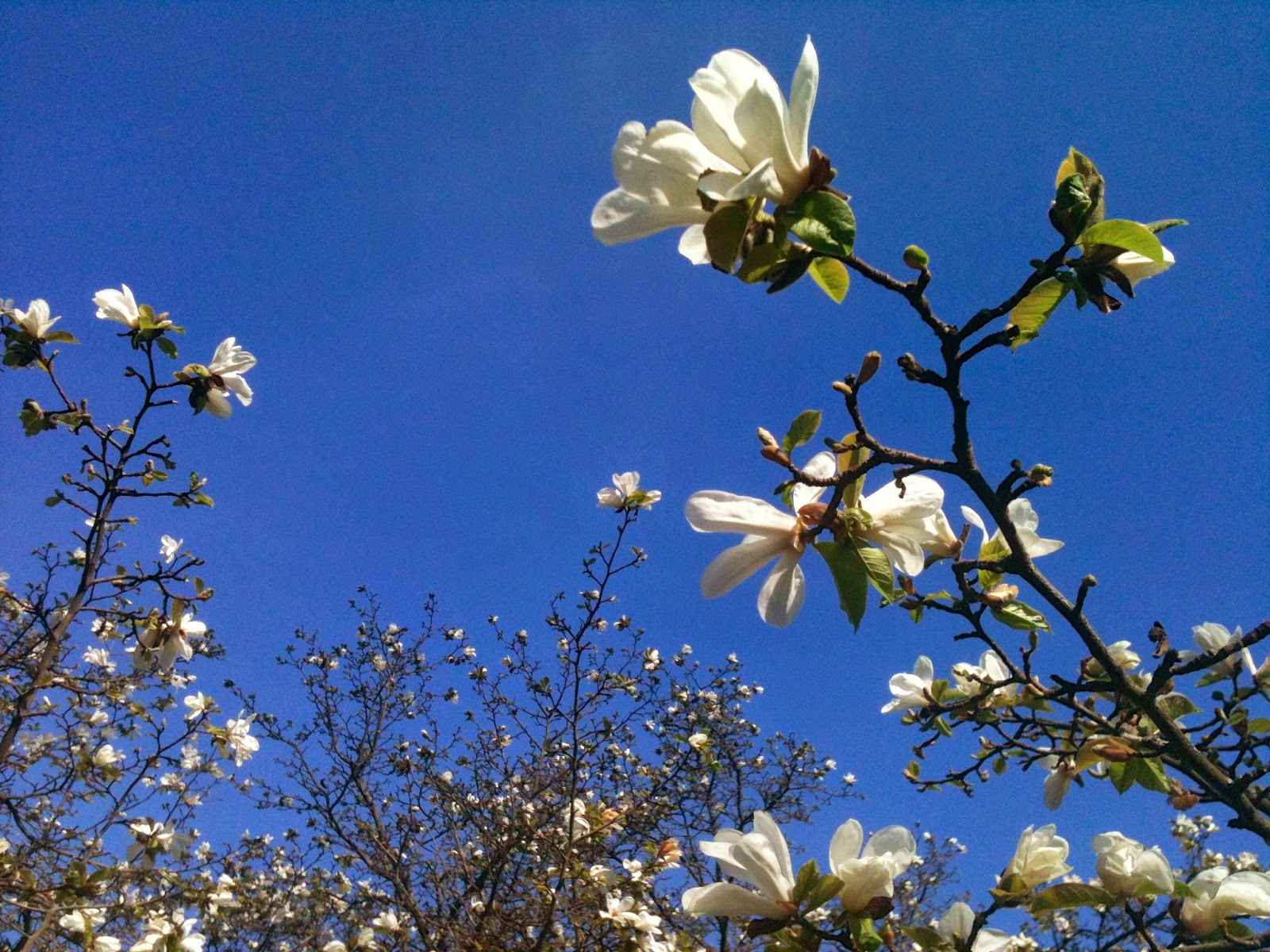Spring came quickly and with an enormous energy this year. Everything is blooming much earlier than we're used to. In Oslo Botanical Garden right next where I live there are already three species of Magnolia in bloom.
The earliest of them all Kobus magnolia, Magnolia kobus, from Japan has already past it's peak. It's a sturdy tree that goes well with the Scandinavian climate. Also - it is one of my favorites since it blooms on bear branches. In the Magnolia grove there is also a couple of Saucer magnolia (Tulip tree), Magnolia × soulangeana. With it's big pink flowers it is a lot more showy - a bit like a beauty queen. A bit further away, behind some other trees, I found a beautiful Star magnolia, Magnolia Stellata, also from Japan.
There are quite a few Magnolia species in the Botanical Garden that blooms later in the season. The Oyama magnolia, Magnolia Sieboldii, is supposed to bloom midsummer in June. Last year the blooming was a lot later and I used it for an ikebana demonstration in the garden as late as the end of August.
Oyama magnolia, Magnolia Sieboldii.
Ikebana demo Oslo Botanical Garden 2013. Entrence hall exhibition.
Ikebana demo Oslo Botanical Garden 2013. Entrence hall exhibition.
In traditional Asian medicine, the bark of the tree is believed to reinvigorate a person's chi, the energy of life that breathes through all. In Hanakotoba, the Japanese system of flower meanings, the magnolia symbolizes the sublime, natural and a love of nature.
The Magnolia is said to be around 95 million years old, and since it hasn't changed that much through history it is considered an ancient tree. The flowers of the Magnolia tree were developed before the bees and are designed for pollination by bugs.
Find out more about the plants in Oslo Botanical Garden and where they are to be found on this Garden Explorer.



